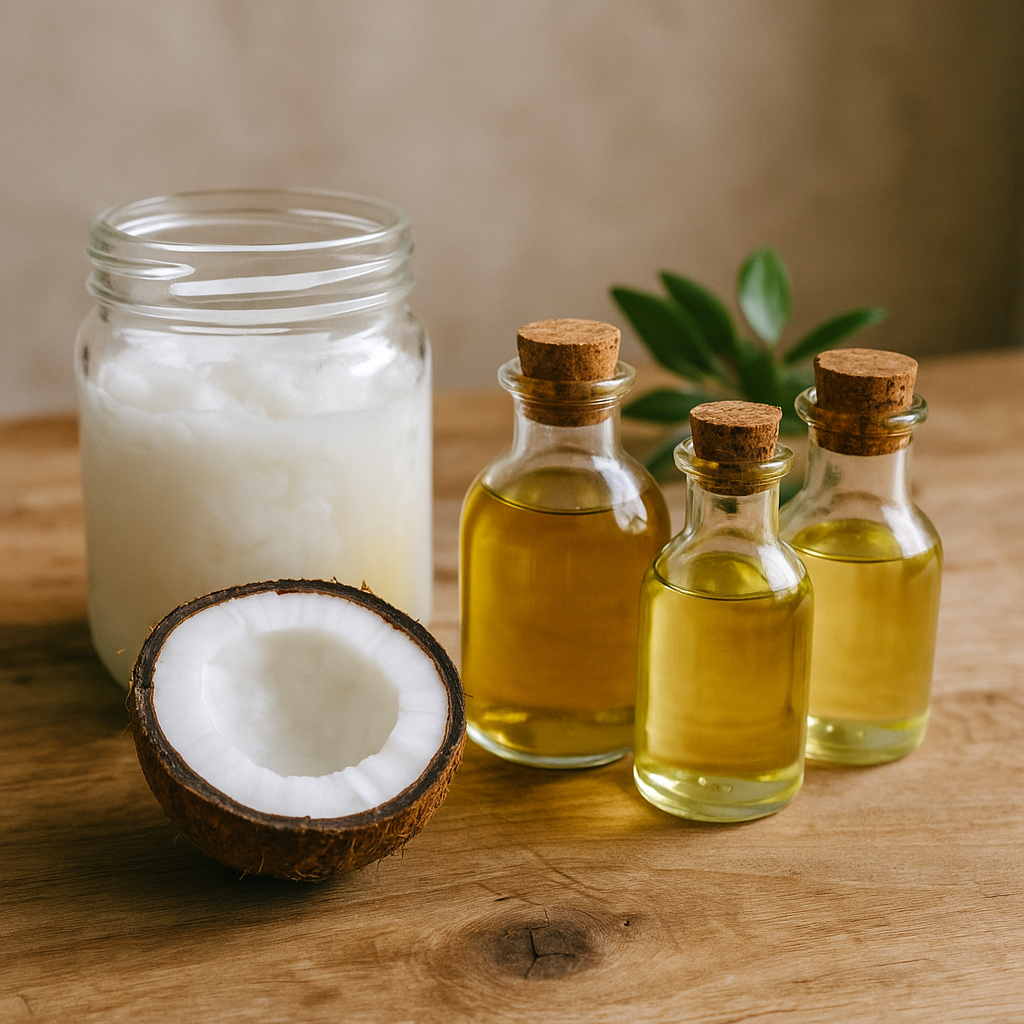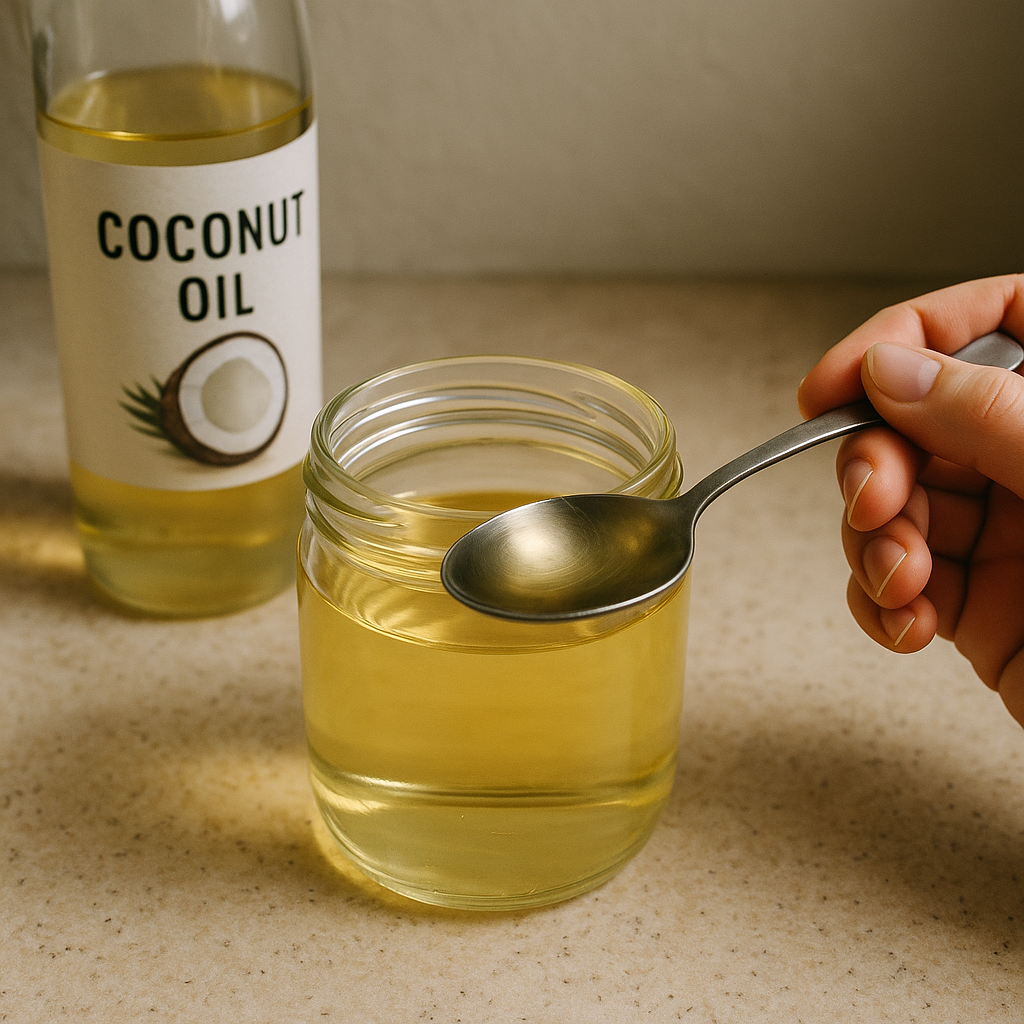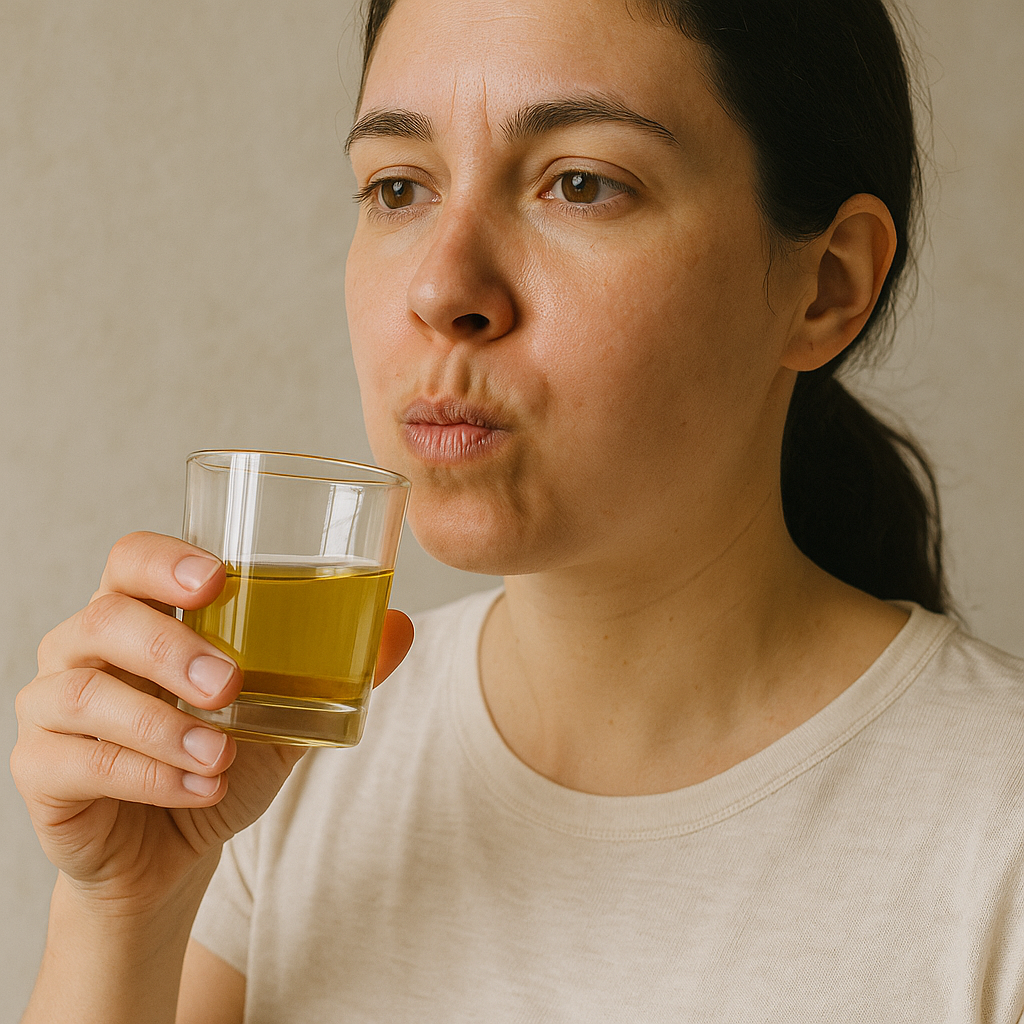Shop Now in Our Store
Which Oil Is Best for Oil Pulling: Ayurvedic Guide to Choosing the Right Oil

If you’ve ever found yourself wondering “which oil is best for oil pulling?” or “which oil to use for oil pulling?”, you're not alone. This ancient Ayurvedic practice has exploded in popularity in recent years, especially among wellness seekers looking for simple, natural ways to improve oral health. But with so many options out there—coconut, sesame, sunflower, even olive—it’s easy to feel lost. And let’s face it, choosing the wrong oil can make the experience less pleasant (or effective) than it should be.
In this article, we’ll break down what oil pulling is, dive into its Ayurvedic roots, and most importantly, help you figure out what oil to use for oil pulling based on your body type, goals, and preferences. We’ll go over which oil is good for oil pulling, what makes an oil high-quality, and how to use it correctly. By the end, you’ll be ready to swish with confidence—and maybe even look forward to it.
What Is Oil Pulling and How It Works
Oil pulling might sound fancy or new-agey, but it's actually a centuries-old technique rooted in Ayurvedic medicine. Simply put, it involves swishing oil around in your mouth—like mouthwash—for about 10 to 20 minutes, then spitting it out. Done daily, this practice is believed to “pull” out toxins, bacteria, and impurities from the mouth and body.
The Ayurvedic Origins and Benefits of Oil Pulling
In Ayurveda, oil pulling is called Kavala Graha or Gandusha, and it's considered a daily ritual for maintaining balance and promoting longevity. Practitioners believe it supports not just oral health but also overall well-being. According to ancient Ayurvedic texts, regular oil pulling can help:
-
Strengthen teeth and gums
-
Eliminate bad breath (yes, really)
-
Improve skin clarity
-
Reduce headaches and sinus issues
-
Enhance digestion by detoxifying the mouth
While not all of these benefits have been clinically proven, many people report noticeable improvements in their oral hygiene and general health after adding oil pulling to their routine.

Which Oil Is Best for Oil Pulling According to Ayurveda
Here’s where things get interesting. There’s no one-size-fits-all answer to which oil is best for oil pulling. Ayurveda tailors recommendations based on your unique dosha (more on that later), but there are still a few oils that are commonly used and widely recommended.
Sesame Oil for Oil Pulling: The Classic Ayurvedic Choice
According to traditional Ayurveda, sesame oil is the OG—the best oil pulling oil for most people. It’s warming, nourishing, and penetrates deep into the tissues. Rich in antioxidants, it also has antibacterial and anti-inflammatory properties that support healthy gums and fight oral bacteria.
Some folks find the flavor a bit strong, but others actually enjoy it. If you're someone who appreciates a more robust, earthy taste, sesame oil might be perfect.
Coconut Oil for Oil Pulling: Popular for Its Taste and Antibacterial Properties
Coconut oil is the modern favorite—and it’s not hard to see why. It's mild, slightly sweet, and packed with lauric acid, which has proven antimicrobial power. Many people who ask which oil should be used for oil pulling gravitate toward coconut oil because of its smoother taste and texture.
It’s especially popular among beginners and those prone to inflammation, as it's considered cooling in Ayurvedic terms. Plus, it’s easy to find and relatively affordable.
Other Oils Used for Oil Pulling: Mustard, Sunflower, Olive
While sesame and coconut oils get the most love, other oils like sunflower, olive, and even mustard can be used. Each has unique properties:
-
Sunflower oil: Light and neutral-tasting, often used in clinical studies on oil pulling.
-
Olive oil: Rich in polyphenols and heart-healthy fats, though some find the flavor a bit too bold.
-
Mustard oil: Strong and spicy—great for certain body types, but may irritate sensitive mouths.
For oil pulling, which oil is best? It really depends on your goals, your dosha, and what you can stick with daily.

How to Choose the Best Oil for Your Dosha and Goals
So, we’ve covered which oil is best for oil pulling in general terms. But in Ayurveda, the real magic happens when you tailor your practices—like oil pulling—to your unique dosha, or body constitution. Understanding your dosha can help you figure out which oil is good for oil pulling specifically for you.
Which Oil Is Good for Oil Pulling for Vata, Pitta, and Kapha
Ayurveda classifies people into three main doshas: Vata, Pitta, and Kapha. Each has its own characteristics, and each responds differently to different types of oils. Here's a quick breakdown to help you decide:
-
Vata Dosha: Vatas tend to be dry, cold, and light. They benefit from warming, grounding oils like sesame. It's deeply nourishing and can help soothe their naturally dry gums and lips.
-
Pitta Dosha: Pittas run hot and can be prone to inflammation. For them, coconut oil is ideal—it’s cooling and calming, making it great for sensitive gums or if your mouth tends to get sore easily.
-
Kapha Dosha: Kaphas are heavy, cool, and often have excess mucus. Mustard oil works well here. It’s stimulating and sharp, which helps balance Kapha's sluggishness. It’s a bit intense, so start slow.
Not sure what your dosha is? No worries. There are plenty of online quizzes that can help you get a sense of your Ayurvedic profile. (They’re kinda fun, too.)
Quality Checklist: Best Oil Pulling Oil Characteristics
No matter which oil you choose—coconut, sesame, olive, or something else—quality matters a lot. You don’t want to be swishing around something that’s been overly refined or packed with preservatives. Ew, no thanks.
Here’s what to look for in the best oil pulling oil:
-
Cold-pressed: This preserves nutrients and keeps the oil as close to its natural form as possible.
-
Organic: Fewer pesticides, better for you.
-
Unrefined: Skip the deodorized, bleached stuff. You want all those natural enzymes and compounds intact.
-
Stored in dark glass bottles: This keeps the oil stable and prevents oxidation from light exposure.
Let’s be real for a sec: you’re going to be putting this in your mouth, so aim for food-grade, high-quality oils. It makes a difference. Don't cheap out, trust me on this one.

How to Use the Selected Oil for Maximum Effect
Now that you’ve picked your oil (go you!), here’s how to use it for maximum benefit. This isn’t rocket science, but a few simple guidelines can make or break your oil pulling experience.
-
Time it right: First thing in the morning is ideal—before you eat or drink anything, even water. Your mouth is full of bacteria after a night of sleep, and swishing helps get rid of them.
-
Use 1 tablespoon of oil: You don’t need a lot. A tablespoon is just enough to swish comfortably without gagging.
-
Swish for 10–20 minutes: Start with 5 minutes if you’re new. Work your way up to 20. (Yes, your jaw will feel like it's been to the gym.)
-
Spit it out in the trash, not the sink: Oils can clog drains over time. Be kind to your plumbing.
-
Rinse well: Use warm water, maybe even with a pinch of salt or a splash of warm water and baking soda for an extra clean feel.
-
Brush your teeth after: This removes any leftover residue or toxins.
By using these steps, you’re giving your mouth a fresh start every day. It’s simple, but surprisingly powerful.
Conclusion
Oil pulling might sound like just another health fad, but this practice has stood the test of time—and for good reason. With just a spoonful of the right oil, you can support better oral health, fresher breath, healthier gums, and even broader wellness benefits, depending on who you ask. And hey, worst-case scenario? Your mouth feels cleaner and your breath smells like coconut (or sesame, if that’s more your thing).
The key takeaway here is that for oil pulling, which oil is best really depends on your individual body, preferences, and goals. Whether you’re team sesame, team coconut, or curious about mustard or sunflower, the most important thing is consistency and choosing a high-quality oil that suits you.
So don’t stress over perfection. Start simple. Swish a little. See how you feel. You might be surprised by how something so basic can have such a refreshing impact.
And if your friends are still asking what oil to use for oil pulling, maybe send them this article. Sharing is caring, right?
FAQs
Which oil is best for oil pulling for daily use?
For daily use, coconut oil and sesame oil are top contenders. Coconut oil is gentle, antibacterial, and has a mild taste—perfect for beginners and daily routines. Sesame oil, on the other hand, is the classic Ayurvedic choice and deeply nourishing. Both are safe and effective when used regularly.
Can I use olive oil or sunflower oil for oil pulling?
Yes, you can! While not as commonly used as coconut or sesame oil, olive oil and sunflower oil are both acceptable for oil pulling. Sunflower oil has been used in clinical studies and is known for its light texture and neutral flavor. Olive oil is rich in antioxidants but can be a bit strong in taste for some people. Either one works if it suits your taste buds and wellness goals.
Which oil is recommended for oil pulling for sensitive gums?
If you have sensitive gums, coconut oil is often the most soothing option. It's naturally anti-inflammatory and cooling, making it ideal for people prone to irritation or tenderness in the mouth. It’s also less intense in flavor compared to stronger oils like mustard. Just make sure to start slowly—maybe with shorter swishing sessions—and monitor how your gums respond.
Final Thoughts
Alright, you made it to the end. Props to you. You now know which oil is best for oil pulling, how to pick it based on Ayurvedic principles, and how to use it effectively. You even know which oil is good for oil pulling for each dosha type, what qualities to look for, and how to get started without clogging your sink. Not bad for one read, huh?
So here’s what to do next:
-
Pick your oil (coconut, sesame, or whichever makes you smile).
-
Give oil pulling a try for one week.
-
See how you feel—and adjust as you go.
-
And maybe share this with a friend who keeps asking which is the best oil for oil pulling, because let’s be honest… they probably still don’t know.
Want more natural wellness tips like this? Subscribe to our newsletter, drop a comment with your oil pulling experience, or follow us on Instagram for daily inspiration. Happy swishing!
This article is checked by the current qualified Dr Sujal Patil and can be considered a reliable source of information for users of the site.
Got any more questions?
Ask Ayurvedic doctor a question and get a consultation online on the problem of your concern in a free or paid mode.
More than 2,000 experienced doctors work and wait for your questions on our site and help users to solve their health problems every day.

